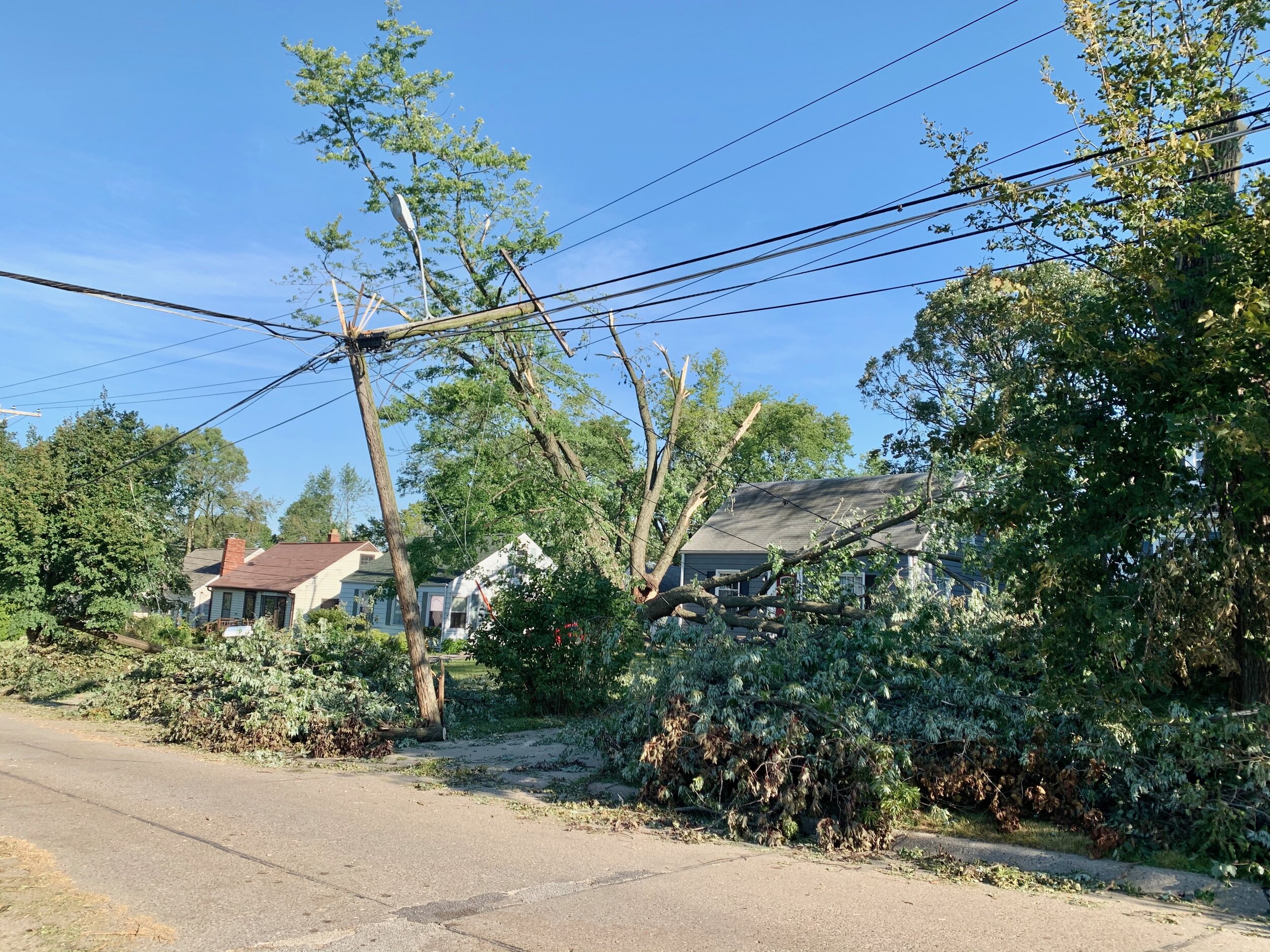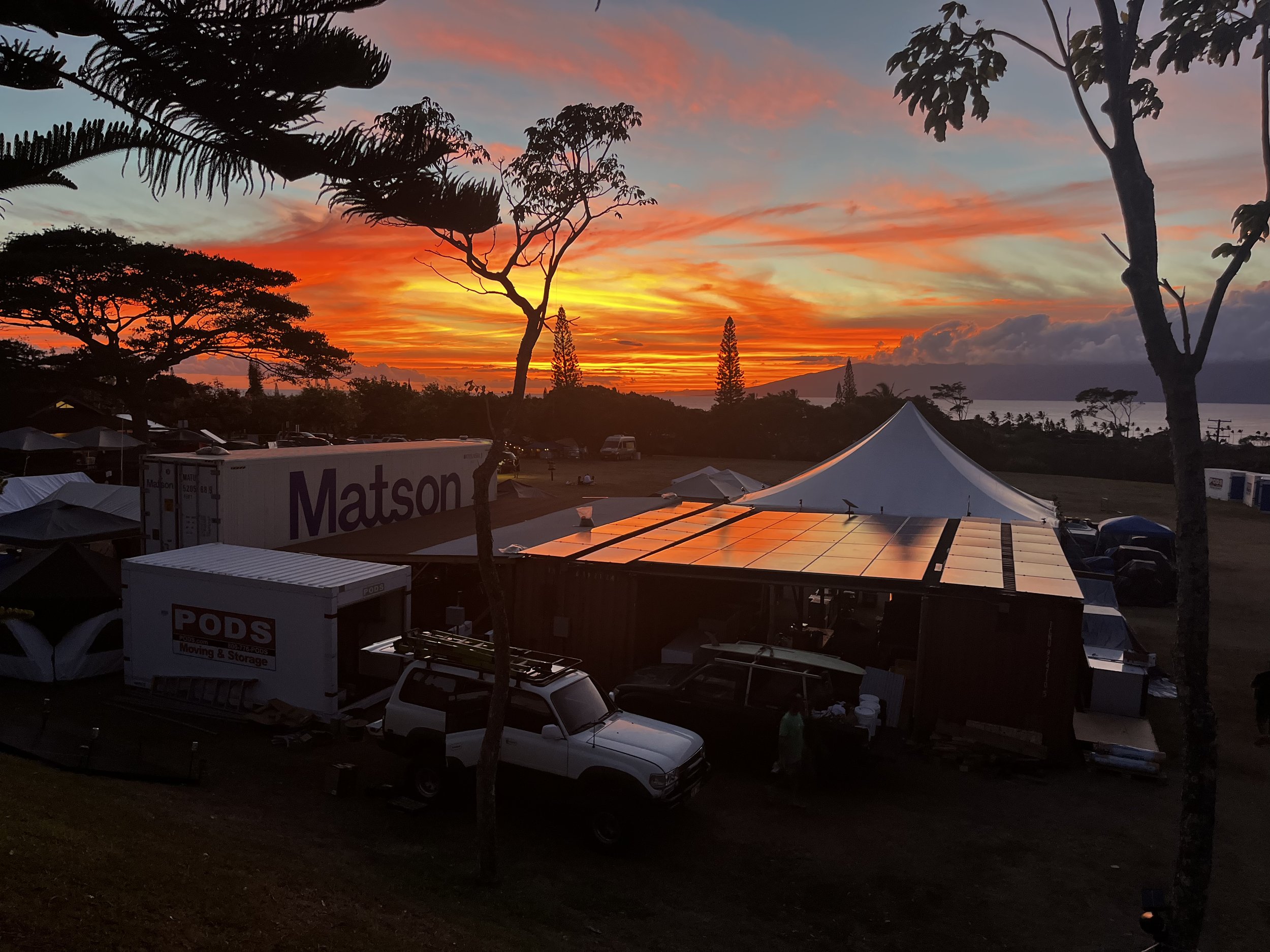On Monday afternoon, the National Weather Service declared a one out of five “marginal risk” warning. They did not predict that a 100 mile per hour wind derecho would leave over 200,000 citizens in Iowa bereft of power.
A Cedar Rapids neighborhood two days after the storm
A derecho is a spanish term meaning “straight ahead,” and is defined as a line of intense fast-moving, damaging windstorms occasionally accompanied by thunderstorms. This type of environmental disaster is notoriously rare and difficult to predict. Although the average wind speed in these straight line storms is 50 to 70 mph, this derecho was particularly fierce, with a record 110 mph, resulting in hurricane force winds in Iowa.
Brian Thomas, a Cedar Rapids resident, told Footprint Project’s deployment team, "The impact is big. Two towers have collapsed at the radio station. Alliant energy has asked people not to drive their cars. There are downed power lines and trees all over."
Hiawatha City Hall site
Within 24 hours of the storm, Footprint Project’s response team made their way to Iowa and deployed one solar trailer, two portable solar generators and additional batteries and panels from Minneapolis to set up public, clean energy access stations in Cedar Rapids, one of the regions hit hardest by the extreme winds. NECHAMA Jewish Response to Disaster also generously donated two portable solar kits to contribute power to those in need.
Neighborhood site, near Garfield Elementary
On Tuesday, the SERRT began setting up two sustainable power sources at Hiawatha City Hall and at Garfield Elementary school, where residents immediately began plugging in.
On Thursday afternoon, they sent out a PSA to publicize the trailer at City Hall from a local radio station.
Neighborhood site, near Garfield Elementary
Today, they are continuing to reach out to companies, universities, and other institutions that have mobile solar energy systems in the region to match additional priority sites with clean power.
With equipment donations as well as support from Footprint Project’s national network, the team will continue its work to provide communities with clean power access through the recovery.
The Footprint Project Team would also like to acknowledge Linn County EMA (Emergency Management Agency) , Kim Downs (the Hiawatha City administrator), and Mike Nesslage (the Hiawatha City Fire chief) for their effort in making these solar deployments possible.
As the week progresses, we hope to continue to reach out to the 65,000 people still in need of power.
Footprint Project’s mission is to help #BuildBackGreener after disasters by providing cleaner energy to communities in crisis. With the increasing frequency of storms across the country, the time to provide energy sustainably is now.
Please help us further support these communities by donating here to help families and neighborhoods in Iowa.
Hiawatha City Hall site




















